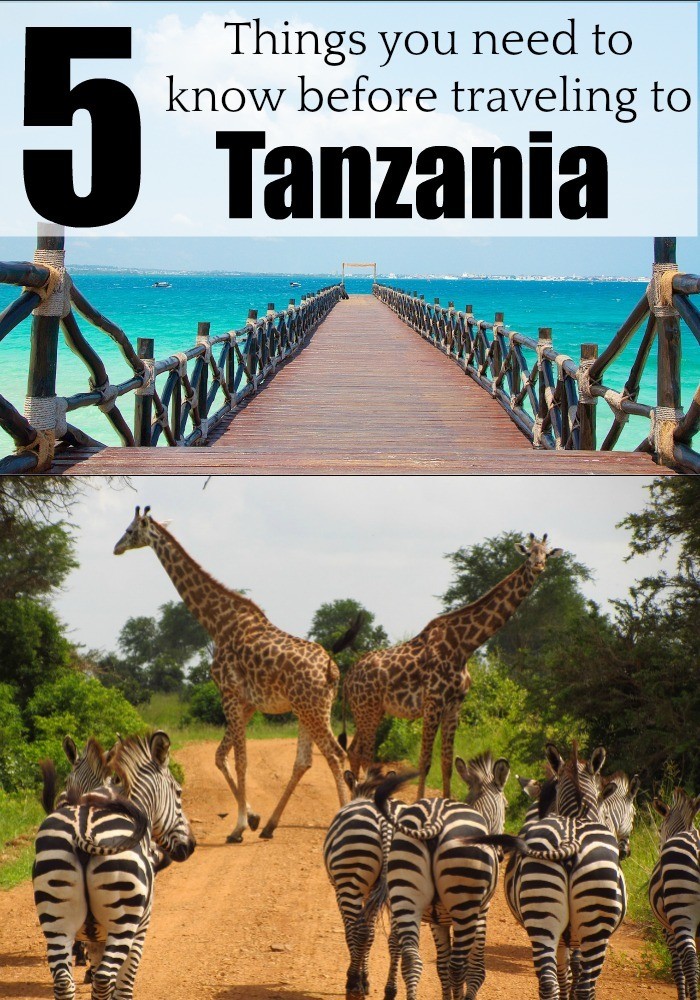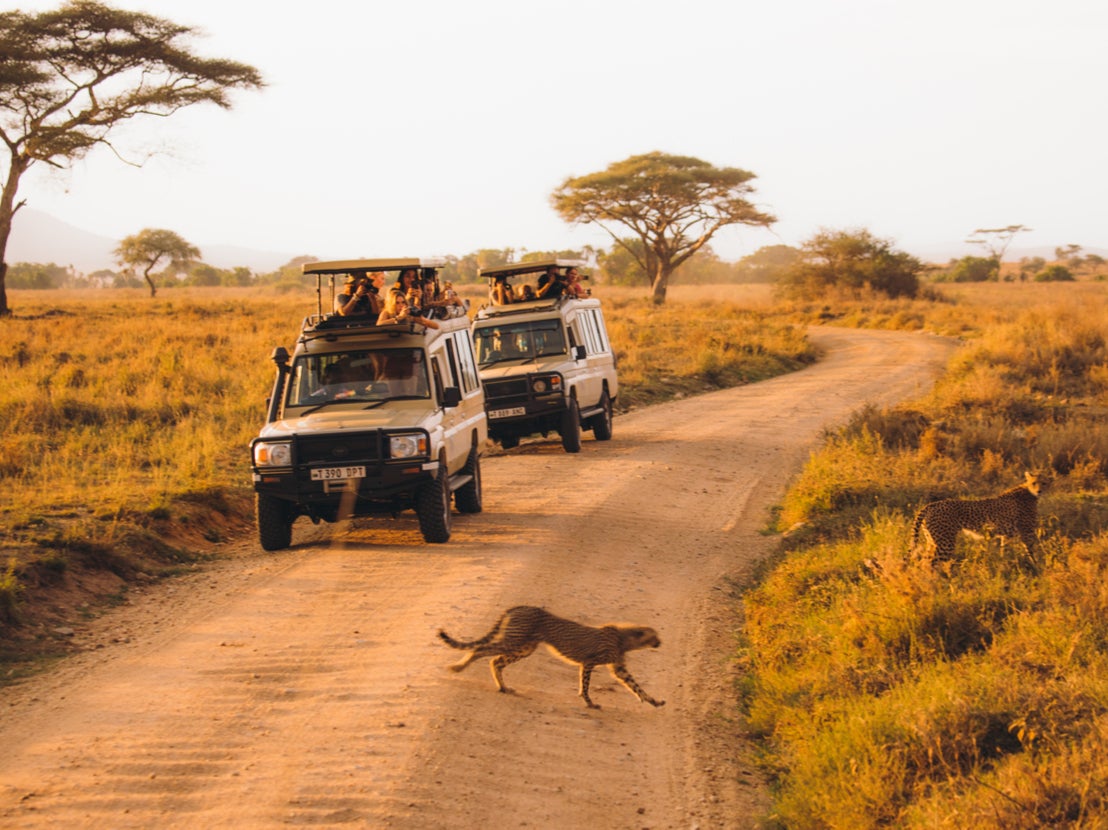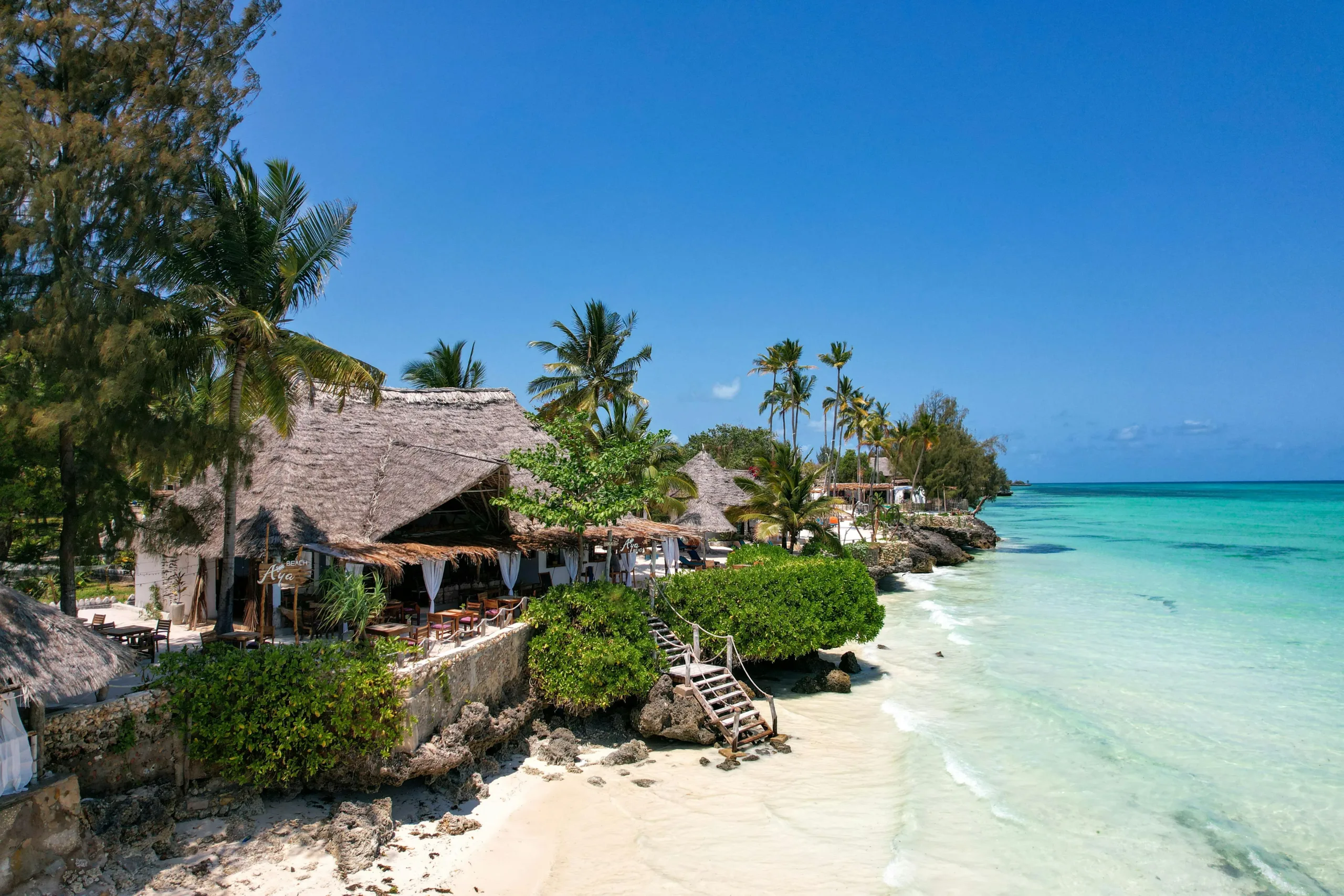
Tanzania, a land of breathtaking landscapes, iconic wildlife, and vibrant cultures, beckons travelers with an irresistible allure. From the vast savannas teeming with the Great Migration to the mystical heights of Mount Kilimanjaro and the pristine beaches of Zanzibar, this East African gem offers an unparalleled travel experience. Embarking on a journey to Tanzania is an adventure that promises to ignite the senses, broaden perspectives, and leave an indelible mark on your soul.
A Tapestry of History: From Ancient Trade Routes to Modern Nationhood
Tanzania’s history is as rich and diverse as its ecosystems. The coastline, a crucial hub for ancient trade routes connecting Africa with the Arabian Peninsula and India, bears witness to centuries of Swahili civilization. The island of Zanzibar, once a powerful sultanate and a center for the spice and slave trades, holds a particularly fascinating and complex past.

Related Articles about Tanzania: A Symphony of Wildlife, Culture, and Adventure:
- Florence: A Traveler’s Guide to the Jewel of the Renaissance
- Peru: A Tapestry of Wonders – Your Ultimate Guide to Adventure and Discovery
- Yogyakarta: A Tapestry of Culture, History, and Wonder
- Morocco: A Kaleidoscope of Culture, Color, and Adventure
- Cusco: Where the Andes Whisper Ancient Secrets and Modern Adventures Await
The interior of the country has been shaped by various migrations and kingdoms, including the Maasai people, renowned for their pastoral traditions and warrior prowess. European colonization in the late 19th century, under German and later British rule, profoundly impacted the region. Following World War I, Tanganyika became a British mandate. In 1961, Tanganyika gained independence, followed by Zanzibar in 1963. In 1964, Tanganyika and Zanzibar united to form the United Republic of Tanzania, a nation committed to unity and development. This history is palpable in the ancient ruins, colonial architecture, and the diverse cultural tapestry that defines modern Tanzania.
Top Attractions: A Kaleidoscope of Wonders
Tanzania boasts a staggering array of attractions, each offering a unique and unforgettable experience:
-
Serengeti National Park: The undisputed crown jewel of Tanzanian safaris, the Serengeti is synonymous with the Great Migration. Witnessing millions of wildebeest, zebras, and gazelles traverse the plains in search of greener pastures, pursued by formidable predators, is a spectacle of raw, untamed nature that will leave you awestruck. Beyond the migration, the Serengeti offers exceptional opportunities to spot the "Big Five" – lions, leopards, elephants, rhinos, and buffalo – as well as cheetahs, giraffes, and a plethora of other wildlife.
-
Ngorongoro Conservation Area: A UNESCO World Heritage Site, the Ngorongoro Crater is a natural wonder unlike any other. This vast, intact caldera, teeming with wildlife, is often referred to as the "eighth wonder of the world." Descend into the crater floor and be immersed in a thriving ecosystem where lions, elephants, rhinos, hippos, and a multitude of bird species coexist in a breathtakingly beautiful setting. The conservation area also encompasses the Ngorongoro Highlands, offering stunning views and opportunities to visit Maasai villages.

-
Mount Kilimanjaro: The majestic "Roof of Africa," Mount Kilimanjaro, is the world’s tallest free-standing mountain and a dream destination for trekkers. Its snow-capped summit, Kibo, at 5,895 meters (19,341 feet), is a challenging but achievable goal for many, offering unparalleled panoramic views. The climb traverses diverse ecological zones, from lush rainforest to alpine desert and the stark beauty of the arctic summit.
-
Zanzibar Archipelago: This exotic island paradise off the coast of mainland Tanzania is a tropical dreamscape. Stone Town, the historic heart of Zanzibar City, is a UNESCO World Heritage Site, a labyrinth of narrow alleyways, bustling bazaars, and intricately carved wooden doors, whispering tales of its spice trade past. Beyond Stone Town, the islands offer pristine white-sand beaches fringed with palm trees, crystal-clear turquoise waters perfect for snorkeling and diving, and vibrant coral reefs. Explore Nungwi and Kendwa for lively beach scenes, or seek tranquility on the less developed northern and eastern coasts. Don’t miss a spice tour to learn about the island’s aromatic heritage and visit the infamous Chumbe Island for exceptional marine conservation and snorkeling.
-
Tarangire National Park: Known for its massive elephant herds and iconic baobab trees, Tarangire offers a more intimate safari experience. During the dry season, the Tarangire River becomes a magnet for wildlife, creating incredible viewing opportunities. The park is also home to a rich diversity of birdlife, making it a paradise for ornithologists.
-
Lake Manyara National Park: Famous for its tree-climbing lions (a rare sight), its vast alkaline lake that attracts thousands of flamingos, and its dense groundwater forest, Lake Manyara is a compact yet rewarding safari destination. It’s an excellent introduction to the wonders of Tanzania’s wildlife.
-
Ruaha National Park: Tanzania’s largest national park, Ruaha, offers a wild and rugged safari experience. It’s renowned for its large lion prides, incredible elephant populations, and a more remote feel, making it ideal for those seeking an off-the-beaten-path adventure.
Essential Travel Tips for Tanzania
Planning a trip to Tanzania requires careful consideration to ensure a smooth and memorable experience:
-
Visas: Most nationalities require a visa to enter Tanzania. These can often be obtained in advance online or at major entry points like Kilimanjaro International Airport (JRO) or Julius Nyerere International Airport (DAR). Check the latest visa requirements for your country well in advance.
-
Vaccinations and Health: Consult your doctor or a travel clinic at least 4-6 weeks before your trip regarding recommended vaccinations (e.g., Hepatitis A, Typhoid, Yellow Fever if coming from an affected country) and malaria prophylaxis. Tanzania is a malaria-risk area, so take appropriate precautions. Carry a basic first-aid kit.
-
Currency: The official currency is the Tanzanian Shilling (TZS). US Dollars are widely accepted, especially for safari packages and in tourist areas, but it’s advisable to carry some Shillings for smaller purchases and local markets. ATMs are available in major towns, but carry enough cash for remote areas.
-
Language: Swahili is the official language, but English is widely spoken in tourist areas, hotels, and by guides. Learning a few basic Swahili phrases like "Jambo" (hello) and "Asante" (thank you) will be greatly appreciated.
-
Cultural Etiquette: Tanzania is a predominantly Muslim country, especially on the coast and Zanzibar. Dress modestly when visiting villages, mosques, and towns, covering your shoulders and knees. In safari lodges and on safari, more casual attire is acceptable. Always ask permission before taking photos of people. Bargaining is common in markets, but do so respectfully.
-
Safety: Tanzania is generally a safe country for tourists, but like any destination, it’s important to be aware of your surroundings. Avoid displaying expensive jewelry or large amounts of cash. Use reputable taxi services and be cautious at night. Your safari operator will provide guidance on safety during your wildlife excursions.
-
Tipping: Tipping is customary for good service. This applies to safari guides, lodge staff, drivers, and porters. Your safari operator will usually provide recommended tipping guidelines.
-
Connectivity: Wi-Fi is available in most hotels and lodges, though it can be slow or intermittent in more remote locations. Consider purchasing a local SIM card for easier communication.
Accommodation Options: From Rustic Charm to Luxury Indulgence
Tanzania offers a diverse range of accommodation to suit every budget and travel style:
-
Safari Lodges and Camps: These are the quintessential Tanzanian accommodation. They range from rustic tented camps offering an immersive wilderness experience to luxurious lodges with all the amenities, often boasting stunning views and exceptional service. Many are strategically located within or near national parks for prime wildlife viewing.
-
Hotels and Guesthouses: In towns and cities like Arusha, Dar es Salaam, and Zanzibar City, you’ll find a variety of hotels and guesthouses, from budget-friendly options to comfortable mid-range and upscale establishments.
-
Beach Resorts and Villas (Zanzibar): Zanzibar is renowned for its beautiful beach resorts, offering everything from boutique bungalows to sprawling luxury villas with private pools and direct beach access.
-
Homestays and Community-Based Tourism: For a more authentic cultural immersion, consider homestays or community-run lodges, offering a chance to interact with local communities and learn about their way of life.
-
Camping: For the adventurous and budget-conscious traveler, camping within national parks (with permits and guides) or at designated campsites is an option.
Transportation: Navigating the Vast Landscapes
Getting around Tanzania requires some planning due to the vast distances and varied terrain:
-
Flights: For longer distances and to access remote areas quickly, domestic flights are a popular and efficient option. Companies like Precision Air and Coastal Aviation operate regular flights between major towns and safari airstrips.
-
Safari Vehicles: The most common way to explore national parks is in a 4×4 safari vehicle, typically a Land Cruiser or Land Rover, equipped for off-road driving and with pop-up roofs for excellent game viewing. These are usually provided by safari operators.
-
Private Vehicles and Drivers: For more flexibility and comfort, you can hire a private vehicle with a driver. This is ideal for exploring towns, visiting multiple attractions, or for those who prefer to set their own pace.
-
Public Transport: For budget travelers, local buses (dala-dalas) and minibuses connect towns and cities. However, these can be crowded, slow, and not always comfortable for long journeys. They are best suited for short distances within towns.
-
Ferries (Zanzibar): Ferries are the primary mode of transport between mainland Tanzania (Dar es Salaam) and Zanzibar, as well as between the islands of Zanzibar.
-
Walking and Biking: In towns and on Zanzibar, walking and cycling are common ways to get around, especially within Stone Town.
Best Time to Visit: Embracing the Seasons
Tanzania enjoys a tropical climate, with distinct wet and dry seasons that influence wildlife viewing and travel experiences:
-
Dry Season (June to October): This is the peak tourist season and arguably the best time to visit for wildlife viewing, especially in the Serengeti. The vegetation is thinner, making animals easier to spot. The Great Migration typically reaches the northern Serengeti and crosses the Mara River during this period (July to October). The weather is pleasant, with lower humidity and minimal rainfall. However, expect higher prices and more crowds.
-
Short Rains (November to December): These are brief, intermittent showers that can cool down the landscape. Wildlife is still abundant, and the scenery becomes greener. This is a good time to visit if you prefer fewer crowds and slightly lower prices.
-
Long Rains (March to May): This is the wet season, with heavier and more prolonged rainfall, particularly in April and May. While the landscapes are lush and vibrant, some roads within parks can become impassable, and wildlife viewing might be more challenging as animals disperse. This is the low season, offering the lowest prices and the fewest tourists. It can be an excellent time for birdwatching.
-
Shoulder Seasons (January to February): This period offers a good balance. The weather is generally dry, the landscapes are beautiful, and you can still experience excellent wildlife viewing with fewer crowds than the peak dry season. The calving season of the Great Migration occurs in the southern Serengeti during February, offering a different but equally spectacular experience.
In conclusion, Tanzania offers an extraordinary journey for every type of traveler. Whether you dream of witnessing the raw power of nature on a safari, conquering the heights of Kilimanjaro, or basking in the sun-drenched beauty of Zanzibar, this captivating nation promises an adventure that will leave you with memories to cherish for a lifetime. With careful planning and an open heart, your Tanzanian odyssey awaits.





